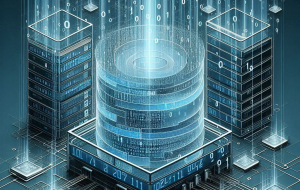Android has Multitasking, iPhone 4S has AI
![]() It was the iPhone 4S that Apple revealed today, instead of the iPhone 5, but the latest device in the iPhone line up still boasts some of the features that were expected for the iPhone 5. An updated device by any other name is still a next-gen iPhone.
It was the iPhone 4S that Apple revealed today, instead of the iPhone 5, but the latest device in the iPhone line up still boasts some of the features that were expected for the iPhone 5. An updated device by any other name is still a next-gen iPhone.
There wasn’t too much Apple could do with the device itself besides catch up to market expectations. Several Android devices boast great cameras these days, far better than the one featured on the original iPhone 4. And with an upgrade to the existing model, Apple’s able to broaden the price range for its iPhone line up to appeal to more consumers. This is a direct play against Android’s myriad of devices that come in all shapes and sizes, at different price points from various carriers. Taking on some of Android’s biggest strengths, the iPhone 4S certainly has caught up to the market.
And while we can hash out the specs of the iPhone 4S for another six paragraphs, I’d rather talk about the immediate future of mobile: the cloud. Moving beyond hardware, which can only dazzle so much in today’s smartphone market, Apple spent the majority of today’s presentation discussing the new areas of integration for the updated iOS. There’s several new functions to consider, such as the Find Friends capability, as well as the promise of the iCloud. This is an important way in which Apple’s looking to combat another of Android’s strengths–cloud support and access.
Both Apple and Android have their own paths to the consumer cloud, Apple being rather focused on media and brand-specific device support, while Android’s play for Microsoft’s software empire makes Google’s mobile efforts worthwhile. Apple’s continuing to build around its cloud services, incorporating more direct functionality into the device and its native apps, making it a more usable smartphone that can do more without relying on supporting apps from third parties. In essence, Apple is making its devices work better with themselves.
![]() But even as the iPhone 4S plays catch up in many aspects, a very important way in which Apple has improved its device is with Siri’s artificial intelligence. The incorporation of this SRI technology, which Apple acquired earlier this year, combines the company’s desire to greatly improve the core function of the iPhone while also giving it something unique in terms of usability and design. Android’s biggest point of differentiation thus far has been its multitasking capabilities, provisioning a deeper level of interaction amongst apps and features. What Siri does for the iPhone is extends the level of interaction at the human level, effectively changing the way we use the device and its associated features and services.
But even as the iPhone 4S plays catch up in many aspects, a very important way in which Apple has improved its device is with Siri’s artificial intelligence. The incorporation of this SRI technology, which Apple acquired earlier this year, combines the company’s desire to greatly improve the core function of the iPhone while also giving it something unique in terms of usability and design. Android’s biggest point of differentiation thus far has been its multitasking capabilities, provisioning a deeper level of interaction amongst apps and features. What Siri does for the iPhone is extends the level of interaction at the human level, effectively changing the way we use the device and its associated features and services.
Something as ambitious as Siri requires a data-centric take on mobile evolution, transforming the concept of a smartphone. Taking AI beyond the basics of voice recognition into an agnostic personal assistant is something a mobile app would have a hard time achieving, so Apple’s goals around sentiment, relational and geo-spatial data is an impressive feat.
There’s no telling what the long term implications of Siri’s mobile integration will be, but it introduces a new chapter in mobile technology that shifts the way we use our devices. AI is something we all dream about in one way or another, and for the mobile industry at large, this convergence of multiple data threads is an indication of how mobile is providing a cozy nest for nurturing AI technology at the consumer level. This is how AI becomes a usable technology, and this is only a peek at how we’ll be using our personal devices in the years to come.
A message from John Furrier, co-founder of SiliconANGLE:
Your vote of support is important to us and it helps us keep the content FREE.
One click below supports our mission to provide free, deep, and relevant content.
Join our community on YouTube
Join the community that includes more than 15,000 #CubeAlumni experts, including Amazon.com CEO Andy Jassy, Dell Technologies founder and CEO Michael Dell, Intel CEO Pat Gelsinger, and many more luminaries and experts.
THANK YOU









